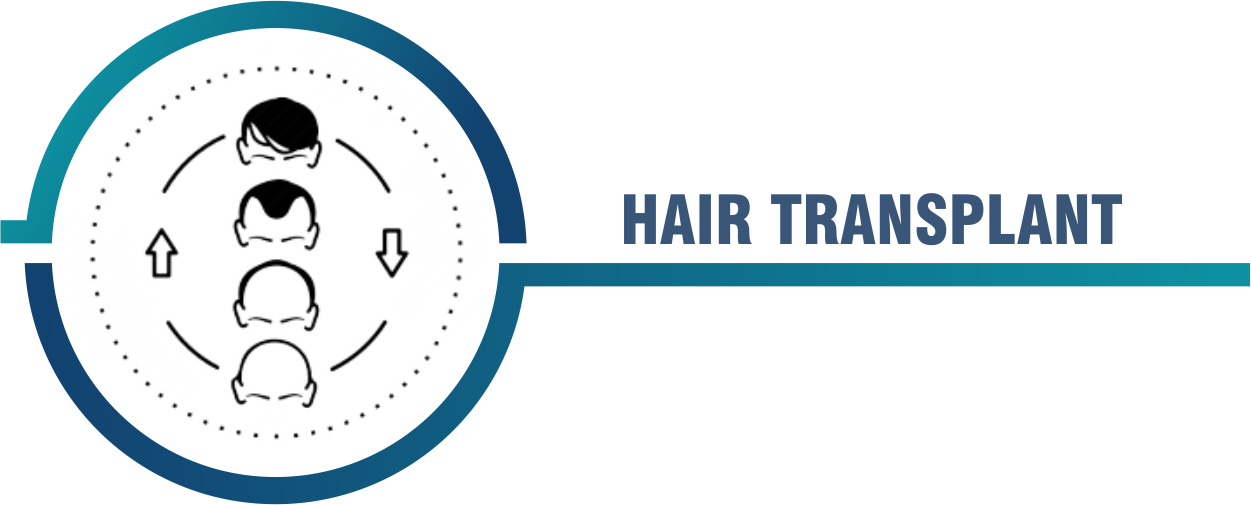
About Hair Transplant
Hair Transplant is a cosmetic procedure in which the bald area is covered with hair and roots taken from donor sites such as the back of the head, beard, or chest. Hair transplants are usually performed in a medical office while the patient is sedated.
Following Hair Transplant procedures are used for hair loss treatment in India:
Follicular Unit Extraction (FUE):
- Individual follicular units are removed one at a time while under local anesthesia.
- The recovery interval is less than 7 times because the punches are generally quite small (0.6-1mm in diameter), so no suturing is required.
- Minimally invasive procedure that is painless
- Body hair may also be transplanted during a FUE procedure.
- However, FUE is a time-consuming procedure that requires only long sessions or several smallish sessions to harvest your hair follicle to a bald location.
FUSS (Follicular Unit Strip Surgery):
- Under local anesthesia, a strip of hair is removed from the donor site, usually the posterior scalp.
- Grafts are placed straight in the strip before being harvested to the hairless area.
- Will leave a visible scar in the donor area, which may be covered by the patient's hair.
- Following the procedure, there will be some pain and tenderness.
- As stitches/staples must be removed, the healing period is slightly longer, around 15 days.
Symptoms
Following are the causes for a hair loss :
- Anxiety, unhealthy lifestyle, injury to baldness.
- Hormonal imbalance like thyroid-associated, baldness after childbirth.
- Autoimmune disorder.
- Medicines such as Chemotherapy etc
- Gradual thinning of hair thinning with the era.
Risk Factor
Hair transplant side effects are usually minor and resolve within a few weeks. Among the possible complications are:
- Scalp infection, bleeding, and swelling.
- Itching.
- Bruises around the eyes.
- Crust formation on the scalp areas where hair was removed or implanted.
- Numbness or loss of sensation in the treated area of the scalp.
- Folliculitis is an inflammation of the hair follicles.
- Shock loss is a sudden but temporary loss of transplanted hair.
- Unnatural-looking hair chunks.
Investigations
Before recommending, the doctor performs a physical examination and inquires about the patient's medical and family history. The following are some of the hair transplant diagnostic tests:
- Hair pull test - The doctor will gently pull several dozens of hair strands (60) to see how many fall out. This aids in determining the stage of the shedding process.
- Hair root KOH mount or scalp biopsy: To analyze the hair roots, the doctor will scrape a sample from the scalp or skin. This aids in determining whether hair loss is caused by an infection.
- Light Microscopy: The doctor will use a special instrument to examine the hairs that have been trimmed at their bases. This aids in the detection of possible hair shaft disorders.
- Blood Test :A blood test will be performed to determine whether a medical condition is causing the hair loss.
| Procedure | India | Turkey | Dubai |
| (Price in USD) | (Price in USD) | (Price in USD) | |
| Hair Transplantation | 1500 | 1500 | 10000 |
| Hair Transplant FUE | 900 | 1400 | 10000 |
| Hair Transplation DHI | 1200 | 1628 | 3267 |
Note : This is an approximate cost and may vary depending on various condition of the patient health after physical evaluation.
Treatment Options
Side Effects
- Infections caused by hair transplants.
- Around the surgical sites, there may be crust or pus drainage.
- Itching and swelling of the scalp.
- Hair follicle inflammation (folliculitis).
- Bleeding.
- Sensation loss around surgical sites.
- Hair that does not match the surrounding hair or is noticeably thinner.
Benefits
Success Rate
Graft survival rates after a hair transplant range between 90 and 95%. This essentially means that hair transplanted from the donor area into the recipient area should remain healthy.
